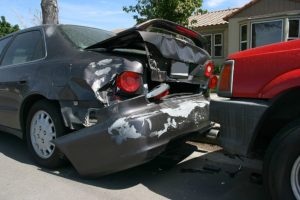What to Do After a Car Accident That’s Not Your Fault
Auto Accidents, Personal Injuries Even the best drivers can have an off day. DUIs, distracted driving, and speeding increase the chances of becoming an at-fault driver in an accident.
Even the best drivers can have an off day. DUIs, distracted driving, and speeding increase the chances of becoming an at-fault driver in an accident.
Sometimes, an automobile accident is the result of negligence. Other times, a car accident is just that – an accident. There is no rhyme or reason, just a simple miscalculation on the part of the other driver involved.
According to the statistics, South Carolina has the highest rate of car crash fatalities per 100 million miles traveled than any other state. The full scope of damages is much more extensive.
The majority of accidents do not end up causing death; however, most accident victims do suffer a variety of ongoing personal injuries and property damage. The bottom line? The effects of a car accident, no matter the circumstances involved, are far-reaching.
Car accidents are an undeniable facet of modern-day life. What do you do if you find yourself involved in a car accident that wasn’t your fault? What steps do you need to take to protect your health, safety, and financial security?
Listed below are eight key steps you should take in the event of an unforeseen car accident. We have taken the time to lay them out in sequential order so that you can understand what you can do to protect yourself at every step in the process.
Check for Injuries and Call Emergency Responders if Necessary
The initial moments directly following an automobile accident are both terrifying and disorienting. The shock of an impact can be jarring, causing your mind to race and your judgment to be temporarily impaired.
Catch your breath, get your bearings, and calm down before you take any other steps. One of the best ways to achieve this is to spend a moment taking inventory of your current situation.
In the first few minutes following the accident, your mind should be focused on safety. That means screening for your own safety, that of your passengers, and eventually the condition of the other driver and their passengers.
Although seatbelt use has been ingrained in our national consciousness over the years, if any of the parties weren’t wearing a proper safety restraint, it can greatly complicate matters. Preserving life and health is priority number one every time.
Start by screening yourself for injuries. Assess whether or not you can move, paying special attention to any bodily trauma you may have sustained, especially impacts to the head. Perform a similar check involving your passengers, before taking the next steps.
If you and your passengers are safe, check to make sure that you can safely exit your vehicle, then assess the other parties involved.
If at any time you note that someone involved has been injured in the accident, no matter how minor that injury may be, call an ambulance before you proceed to the next step.
Note: do not try to move unconscious or pinned individuals. It can cause unintended damage, especially to the spinal column. Simply wait for emergency responders.
Move Your Vehicle to a Safer Location (But Don’t Flee the Scene)
Accidents never happen in a vacuum. They happen in the middle of real-world conditions. You have a civic responsibility to make sure that your accident doesn’t cause other passersby to get involved in a car crash of their own.
Once you’ve assessed all parties for injury, it’s time to prevent further accidents if possible. If your vehicles are in the middle of the road —and you find safe harbor nearby—they will remain in harm’s way unless you take appropriate steps.
As long as the situation is safe, you should make initial contact with the other driver and indicate that you intend to pull your vehicle off the road and out of harm’s way. Look for parking lots or a generous shoulder nearby.
If there is no safe parking available, do not move either vehicle, as that could cause further danger. The best way to approach the situation is on a case-by-case basis.
It should be noted that you should never flee from the scene of the accident, even if you weren’t the one that caused it.
This is a serious offense and may land you in more trouble than the driver that ran into you. At this stage in the process, let common sense and safety be your guide as you work to keep all parties involved free from harm.
Call the Police Right Away
Too often, it is the first instinct of those involved in a car crash to try to handle the proceedings on their own without the aid of law enforcement.
Some people view contacting the police as complicating the issue. Nothing could be further from the truth.
Involving the police is a way to protect yourself and report the accident, especially if it wasn’t your fault. Fight the instinct to handle everything one-on-one with the other driver. It can lead to trouble down the road.
Contact law enforcement early in the process. During your conversation with the 911 dispatcher, they will ask you questions designed to gauge whether you and the other party are in imminent peril. If you are relatively safe, you might have to wait a few minutes for the closest officer to arrive.
It pays to get the ball rolling early so that you spend as little time as possible by the roadside.
Once an officer arrives, they will assess the accident scene, interview each driver, and generate a police report. The motor vehicle accident report is a key document in the case of an insurance and injury claim.
While the police report isn’t always admissible in court, it can also play a role should your case progress to small claims court eventually. Either way, added documentation demonstrating that you were not the party at fault is never a bad thing.
Exchange Relevant Information With the Other Driver
You will have to coordinate with the other driver at some point in the process. This can be difficult to do for many people. Following a collision, tensions and emotions run high. Before speaking with the driver, always make sure that the situation is safe.
If everything appears safe, you’ll need to talk to the other driver to move the process along. At this phase, your objective is to obtain key information from them.
That information includes:
- Car insurance documents
- Their name and contact info
- Make and model of the car involved
This information helps tie you and the other driver together, so they can’t dodge an insurance claim or small claims case. It is also necessary information from the insurance company’s standpoint. It should be noted that it is always a best practice to limit your interaction past obtaining basic insurance info.
At the moment it might make sense to review the details of the accident, but what you say to the other party might have unintended consequences down the road.
Enlist the Help of Witnesses
Once the initial shock and emotion have passed, every step in the process should be designed to protect yourself in the event of future legal proceedings.
Your goal, starting with the accident report and other driver’s insurance info, should be to gather as much supporting documentation as you can regarding the incident.
It is essential to have information that corroborates your side of the story, proving that you were not at fault for the car accident. One of the most thorough and efficient ways to do this is to enlist the help of eyewitnesses.
After speaking with the other driver, survey the scene for any parties that might’ve seen the incident as it occurred.
That can include:
- Pedestrians
- Employees at surrounding businesses
- Other drivers
- Residents who live in the immediate vicinity
Ask each eyewitness for their account of what happened and record it using either the tools included with your mobile device, or paper if a cell phone is not available. This information can go a long way should your case eventually progress to a court of law.
Photograph Everything You Can
The kindness of strangers is one thing, but it also pays to protect yourself. It is generally the rule of thumb to photograph everything you can after an automobile accident using your mobile device if available.
Make sure to take pictures of your vehicle, specifically the damage incurred. Don’t hesitate to take pictures of the other party’s vehicle as well. This serves as a physical record of the incident should the other party repair their vehicle and attempt to deny the crash.
It is also beneficial to take photographs of the surrounding scene and a picture of the accident site as a whole if possible. That way you can establish road and environmental conditions that might’ve had an impact on the event.
If you haven’t moved your vehicles, it can be advantageous to capture an image of both cars and their positioning following the crash to help emergency professionals, insurance adjusters, and law enforcement officers accurately piece together what happened.
Call Your Insurance Provider
Just as it is tempting not to involve law enforcement after a fender bender, it can also be tempting to forgo filing an insurance claim. Insurance exists to help you mitigate the effects of a car accident no matter how minor you feel they are.
Insurance can help pay for repairs to vehicles as well as cover medical bills and other expenses when you file a claim.
Do not wait to file your insurance claim, especially if you aren’t at fault for the crash. Taking a proactive approach upfront can help you save money, exasperation, and heartache down the road. A car accident claim can also offer you some legal and financial protection should the issue eventually progress to court.
The insurance adjuster that you work with your attorney to conduct a thorough investigation that includes an interview with the other driver. This investigation process is designed to uncover the party who was ultimately at fault for the accident, holding their insurance company responsible for any repairs involved.
The insurance adjuster’s determination can go a long way toward establishing culpability should the case require the intervention of a court.
How Does Insurance Work When It’s Not Your Fault in South Carolina?
In South Carolina, the way insurance works when you’re involved in a car accident that is not your fault is guided by the principles of a “fault” or “tort” system. This means that the person responsible for the accident is the one liable for the damages.
Here’s a breakdown of how this typically works in South Carolina:
1. Determining Fault
The first step in the process is determining who is at fault for the accident. In South Carolina, fault is determined based on the evidence, including police reports, witness statements, and other relevant information.
2. Filing a Claim
If you are not at fault, you have several options:
- Filing a Claim with the At-Fault Driver’s Insurance: You can file a claim with the at-fault driver’s insurance company to seek reimbursement for your damages.
- Filing a Claim with Your Insurance: If the at-fault driver is uninsured or underinsured, you can file a claim with your own insurance company under your Uninsured/Underinsured Motorist (UM/UIM) coverage, if you have it.
3. Damages You May Recover
The types of damages you may recover include medical expenses, lost income, property damage, and potential pain and suffering.
4. Comparative Negligence
South Carolina follows the rule of “modified comparative negligence.” This means if you are found to be partially at fault, your recovery may be reduced in proportion to your fault, as long as you are not more than 50% at fault.
5. Working with an Attorney
If the insurance company disputes the claim or if you have difficulties navigating the claims process, you may want to consult with a South Carolina attorney specializing in motor vehicle accidents.
Contact a Charleston Car Accident Attorney
Once you’ve taken all the preceding steps, the matter should be settled right? All that’s left to do is get your car repaired and get back on the road. Life isn’t always that simple, however. Not everyone you meet will act in good faith.
Even if you weren’t at fault for the accident, that doesn’t mean the other party or their insurer will accept responsibility without a fight. Situations may arise after the fact that require intervention from a legal professional.
For starters, the other party might dispute the details of the accident, denying their responsibility. It is their right to get an attorney as well. In some cases, the other party’s insurance provider may fight your claim and refuse to pay.
Even if you’ve dotted your I’s and crossed your T’s, following the steps suggested above, presenting the facts of your case in a legal venue is a challenge all its own.
To protect yourself and your family, contact a lawyer and begin a professional relationship if the matter progresses to court.
A lawyer can take all the information you’ve gathered, such as police accident reports, photographs, eyewitness accounts, and insurance documentation, and evaluate it for suitability in a court setting.
An attorney can sort through any applicable information you provide and present it in a more meaningful manner designed to effectively argue your case.
While no legal professional can guarantee a specific result with 100 percent certainty, they can at least compile the information with intent, and under existing law.

Nate Hughey, Car Accident Lawyer
Nathan Hughey, an attorney and fourth-generation South Carolinian, founded Hughey Law Firm in 2007. Before that, he spent five years defending nursing homes and insurance companies. Leveraging his experience, he now advocates for those injured or wronged by such entities, securing over $290 million in verdicts and settlements.
